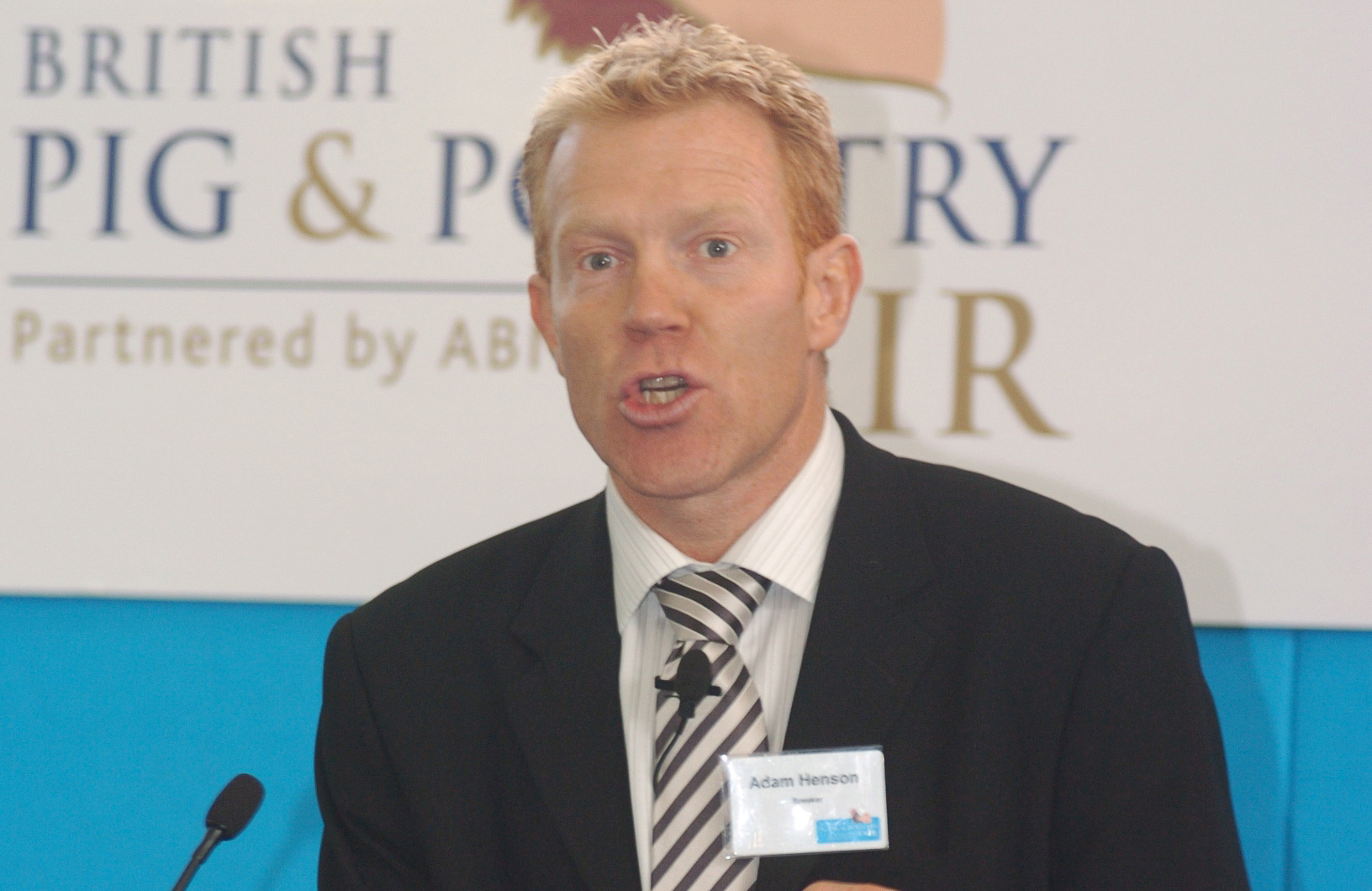
The agricultural industry needs to restore trust in food labelling. That was one of the messages to emerge from the headline debate at this year’s Pig and Poultry Fair.
The debate, which was hosted by the BBC’s Adam Henson, asked whether it was possible to persuade consumers to buy more British. A panel of guests comprised Bill Thurston of Vion Food Group, John Bourne of Defra, Andrew Nicholson of the Co-operative, Richard Lowe, interim chief executive of Agriculture and Horticulture Development Board and poultry producer Jonty Hay. Their discussion was watched by a packed audience on the opening day of the fair at Stoneleigh Park on May 11.
Andrew Nicholson said that clear and informed labelling systems were vital to restore consumer trust. He said there had been some abuse of labelling in the past, although action had been taken to prevent it. Andrew did not point to specific labelling abuses, although free range egg producers are well aware of one notable recent case in which eggs were falsely passed off to consumers as free range or organic.
The multi-million-pound fraud involved Heart of England Eggs, near Bromsgrove in Worcestershire. Keith Owen pleaded guilty to three counts of false accounting at Worcester Crown Court and was sentenced to three years in prison. He was ordered to pay a total of £3.25 million (a £3 million confiscation order and 250,000 prosecution costs). The British Egg Industry Council has since moved to implement measures to prevent such fraud, including on-farm egg stamping. Those taking part in the debate at the Pig and Poultry Fair clearly felt that trust was an issue not only for the egg industry but also for the rest of the agricultural industry.

Richard Lowe accepted that there had been some labelling abuse and that it had resulted in bad press for the agricultural industry. Andrew Nicholson said that such bad press sold newspapers. It was difficult to persuade newspapers to tell people about things going well. He said building trust in labels was very important, although he believed it was possible to do so. His organisation, the Co-operative, was the most trusted brand in the UK, he said. "We got there by telling people the way it is."
Those who attended the debate heard the results of an experiment run jointly by ABN and RASE to obtain views on the pig and poultry industry from a small group of consumers. They were asked how they thought pig and poultry farms operated and then taken to individual farms to see how animals were treated in reality. The 13 consumers involved in the experiment were, in the main, pleasantly surprised with what they found on the broiler farm of Jonty Hay. A number said they expected to see the birds housed in cages. However, they were surprised at the amount of space the birds had in the shed they visited and were happy with the conditions in which the birds lived. In contrast, they believed the pigs they saw should have had more room in their housing.
When it came to labelling, it was clear that the consumers involved in the study were not sure what the red tractor label signified. Both panellists and visitors to the Pig and Poultry Fair debate expressed some concern. Bill Thurston said, " It’s amazing that you can have a mark for 10 years and consumers don’t know what it means. We have to find a way of getting the message across." One member of the audience said, "It is worrying that they didn’t know what the red tractor was for. Does that mean we have failed in marketing it?"

Richard Lowe said that whilst an organisation like McDonald’s spent five per cent of turnover on marketing, the red tractor had no marketing budget – even though the label appeared on £10 million of products. He said that one possible way of raising money for marketing might be to impose a small fee on packers for using the label.
The panellists felt that the consumers’ positive reaction to what they saw on Jonty Hay’s poultry farm illustrated the importance of educating the public about how food was produced. "We have got to get their preconceived ideas in line with what we do," said Jonty, who admitted he had initially been nervous at the prospect of the visit. In the end he had enjoyed showing the consumers around the farm. "They are just the same as you and me. They just wanted to know what we did and how we did it." He said they were pleasantly surprised by what they saw on the farm.
Adam Henson said it seemed that people were interested in what happened on farms and arranging visits could be a good idea. Bill Thurston said, "When you show people it does open their eyes, but how do we do that with 50 million people." Andrew Nicholson said the Co-operative was the country’s biggest farmer and its farms were opened to the public. A member of the audience mentioned schemes run at the Royal Norfolk and Royal Suffolk showgrounds which introduced groups of schoolchildren to farming practices.
Another speaker said it was important to educate adults as well as children.
One member of the audience asked about the risk to bio-security from farm visits. Jonty said that 90 per cent of people were no risk and other cautionary measures could be taken to maintain bio-security – making use of protective suits and avoiding farm visits during the migration season to minimise the risk from AI.
Andrew Nicholson offered an interesting insight into the shopping habits of consumers when he was asked how important animal welfare issues were to members of the public. "If they are asked before they go into the store, animal welfare is very important. But when they go shopping they do tend to put a little bit of that to one side – when they are walking around supermarkets buying products."
He said that consumers usually took about three seconds to make a buying decision, and welfare could tend to go out of the window to some extent in that time. Fair trade food, however, tended to be something that consumers tended to decide to buy beforehand and the decision did not change once in store. He said the industry needed to achieve that with the red tractor label and British labelled food.
